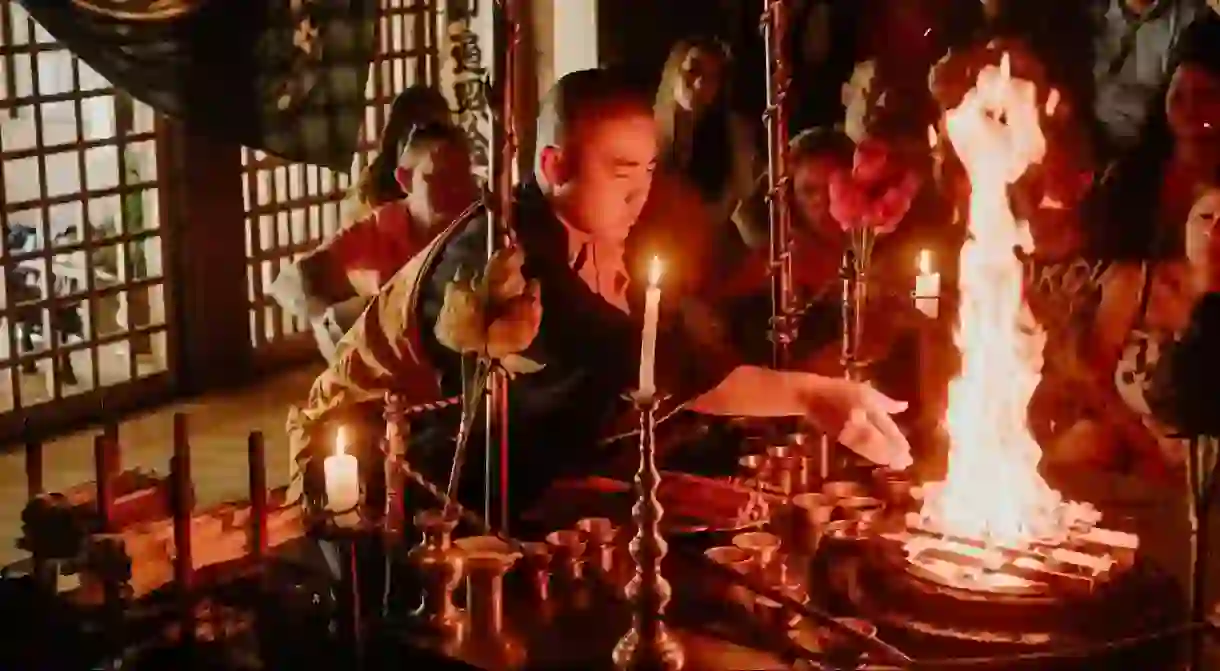A Guide to Going on Retreat on Mount Kōyasan

One of Japan‘s most sacred mountains is quickly becoming one of the country’s most popular and unique tourist destinations. Worlds away from the manic hustle and bustle of the major cities of Tokyo and Osaka is Mount Kōyasan, the centre of Shingon Buddhism and home to one of the most spiritual experiences in the world.
Meet the stunning Mount Kōya
Located in Wakayama prefecture, not too far from the city of Osaka, sits Mount Kōya, aka Kōya-San to the locals. Sitting in the lush surroundings of the forested Kii peninsula, the mountain has long been a destination for pilgrims on the hunt for religious and spiritual connection.


Towering a massive 800 meters above sea level, the mountain strikes and imposes an intense figure, but you cannot really fathom the area’s power until you implant yourself on its peak. Rich with spiritual history, and home to incredible natural views, Mount Kōyasan has become a now not-so-secret retreat getaway for those looking to reconnect with the world.

History
The mountain has been considered the physical and spiritual home of Shingon Buddhism ever since the sect’s introduction into Japan back in 805 by Kōbō Dashi, one of the country’s most iconic spiritual leaders.


Also going by the name Kukai, this important religious figure built the sect’s headquarters, the Garan Temple, on the mountaintop in 826 after years of searching for the perfect place to base his religion. As the years passed and different sects and strains of spiritual followers, temples started popping up on the mountain’s grounds. Today, the most famous temples are Kongobuji, the main temple of Shingon Buddhism, and Okunoin, Kobo Dashi’s mausoleum.



Why people visit
Today, many people from all walks of life make their way to Mount Kōya to experience the simple yet fulfilling life of a Buddhist monk. Most people visit retreats to eat vegetarian Buddhist food, stay overnight in temples and experience the deeply moving ritual of the monk’s morning prayers.


Accommodation
If you wish to experience a Mount Kōya retreat, then you’ll be staying in temple lodgings, known as shukubo. There are in fact now over 50 temples on the mountain that act as shukubo, so where you stay really depends on each individual’s taste. Rooms are typically traditional Japanese-style, with tatami mat flooring and futons. It’s recommended that if you do plan to stay the night, be sure to not arrive any later than 5pm as the traditional Japanese vegetarian dinners are served at 6pm sharp.





How to get there
Mount Kōyasan is conveniently located not too far from the heart of Osaka, making accessibility a breeze. Conveniently sitting on the Nankai railway line, there are a few ways to get there from the city. You can catch the train from either Namba or Shin-Imamiya stations, as both visit the mountain’s main train stop-off, Gokurakubashi station.

There are a few limited express trains that run through Osaka, and the trip takes in general about 80 minutes and costs 1,560 yen (US$14) each way. If you’re strapped for cash but have a little more time, it’s worth considering catching the rapid express train, which takes about 100 minutes and will require a switch at Hashimoto station along the way; that said, it’s a great way to check out some new places outside of the city.


To ascend the mountain you’re going to have to catch a cable car; you can hop on this from Gokurakubashi station. The cable car takes guests up to the mountain for about five minutes and costs 390 yen (US$3.50). From there, it’s time to grab a bus into the city centre. The bus ride is around ten minutes long and costs 290 yen (US$2.60). Though it’s a little bit of journey to get there, once you reach your destination, you’ll agree it was worth it.















